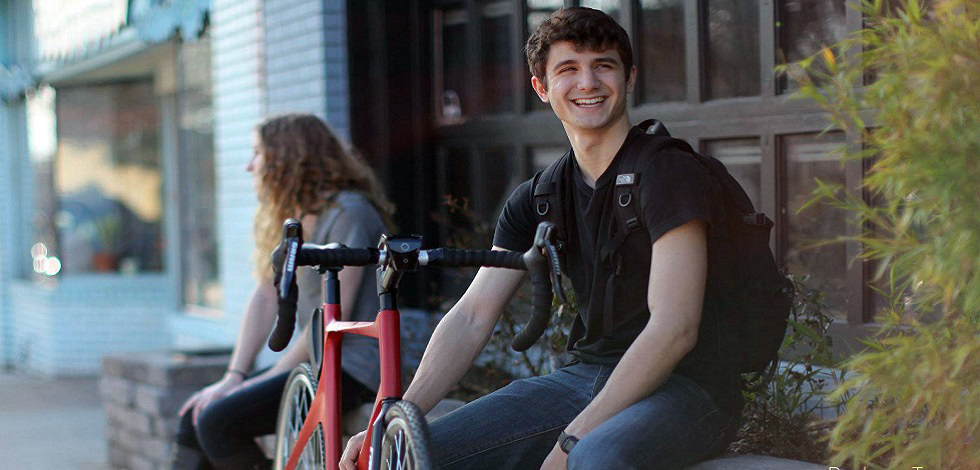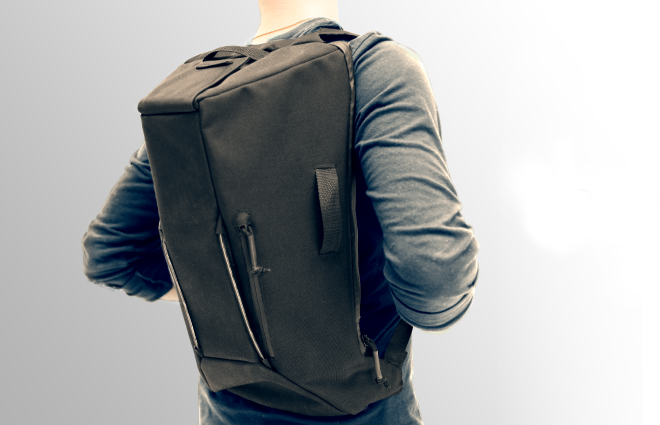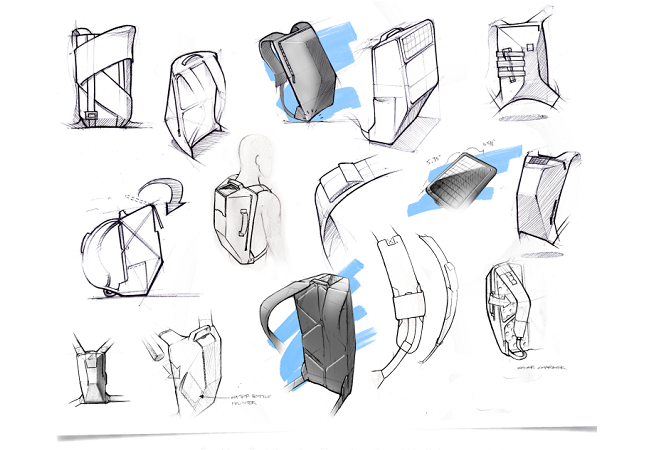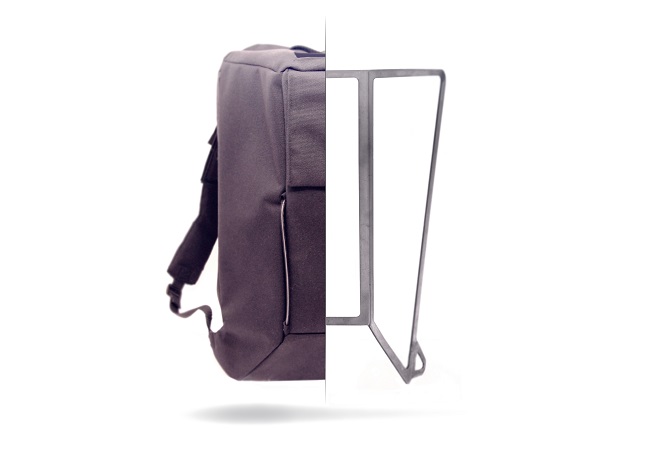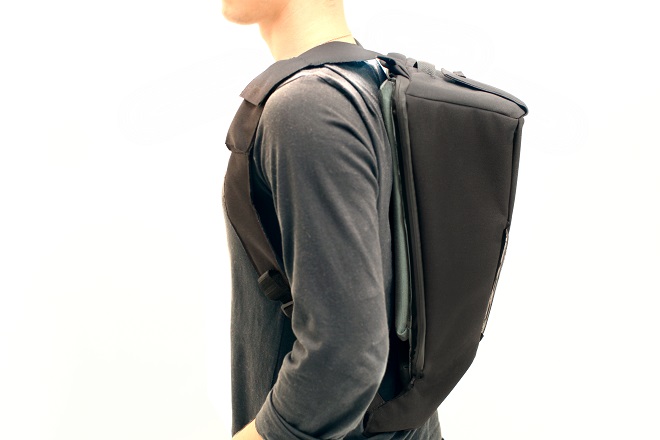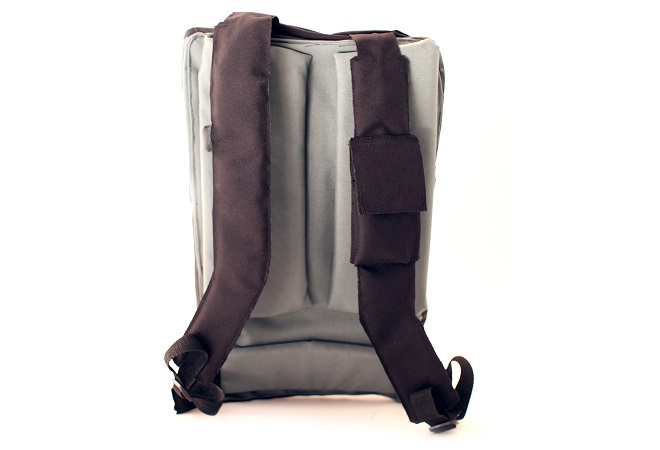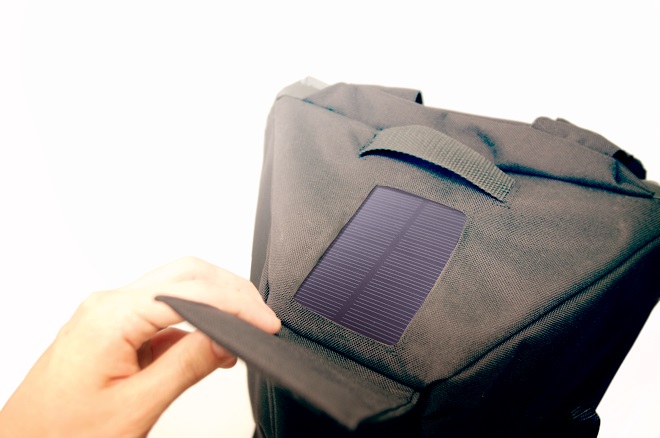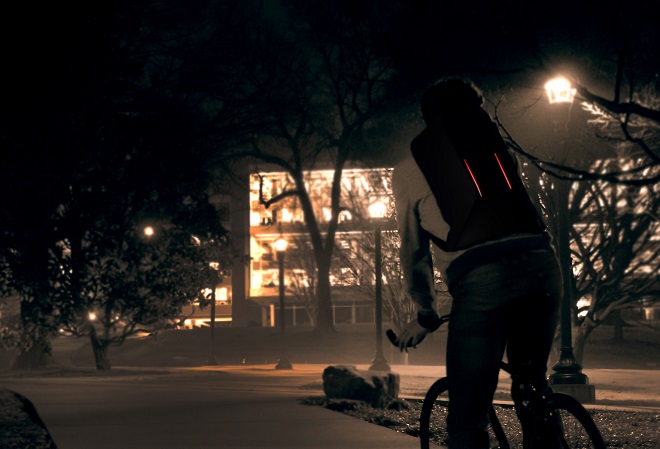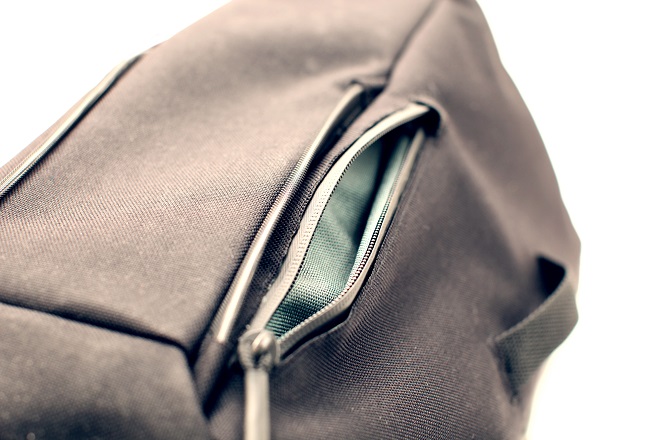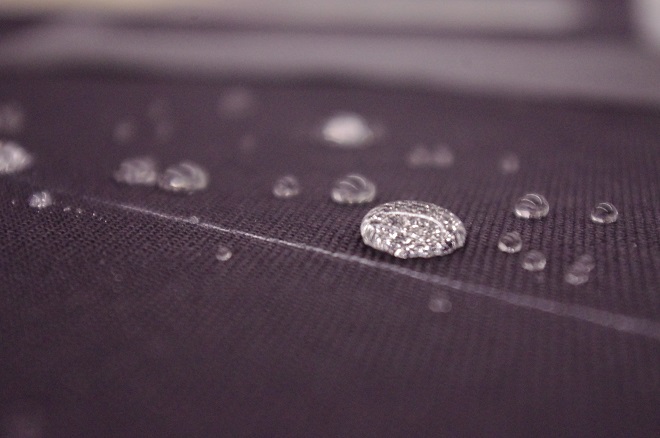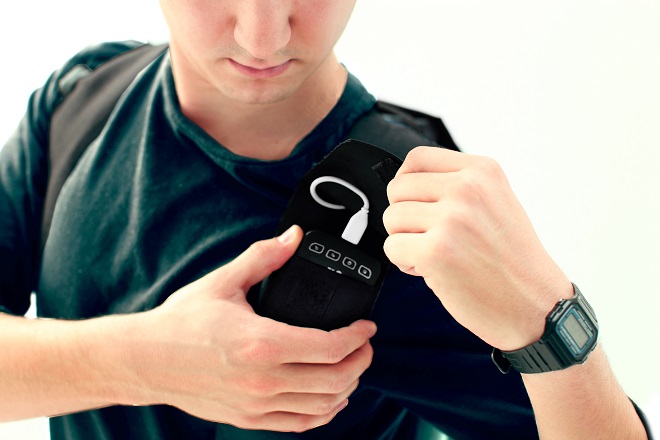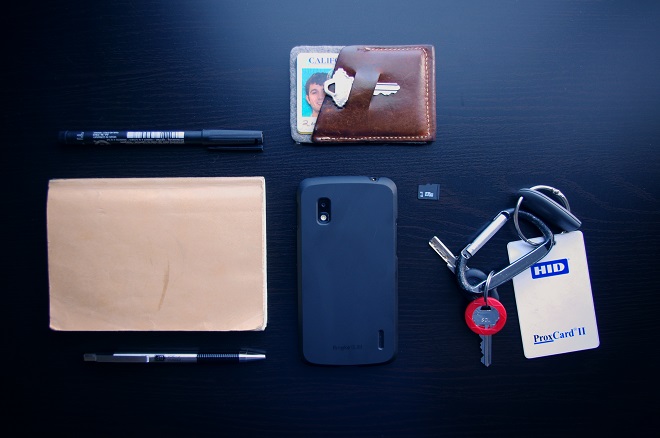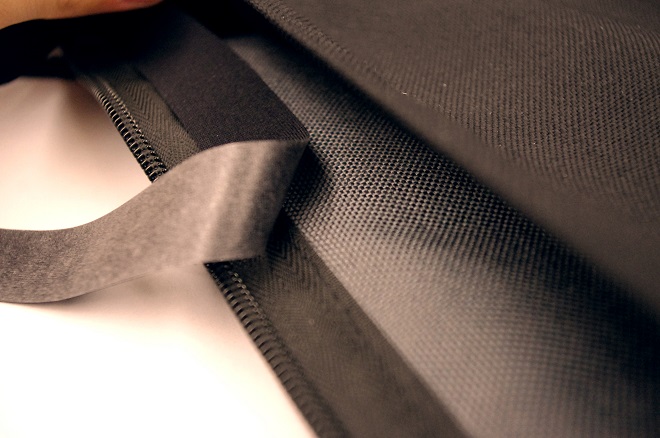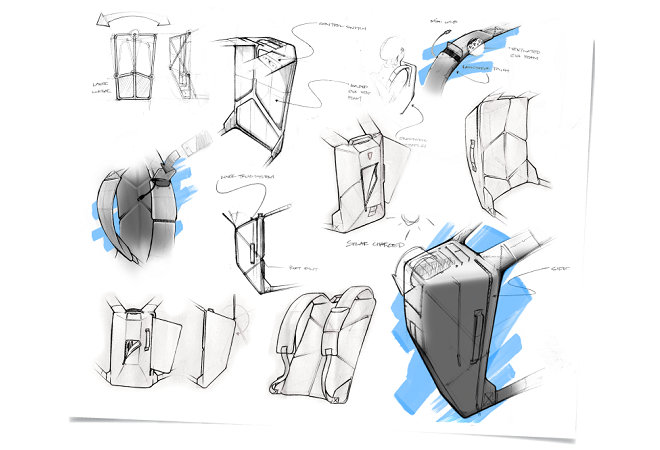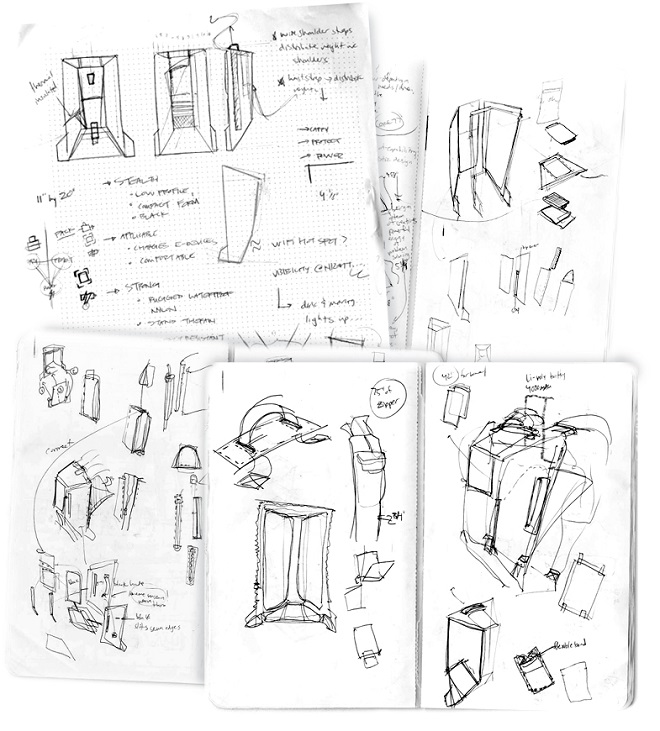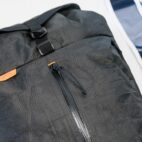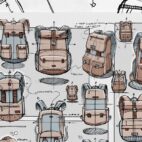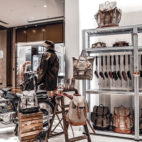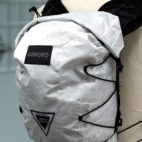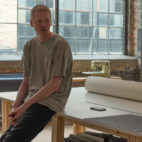Interview with Luke Mastrangelo :: Prism concept backpack
Some carry stays in the background. Other carry grabs you, yanks you back and shouts ‘Look at me!’ – but in a good way. The latter was the reaction when Carryology first came across the Prism backpack…and it seems we weren’t the only ones to have this reaction. The Prism backpack concept, created by Luke Mastrangelo, was chosen as a finalist for the 2013 International Design Excellence Awards.
Luke graduated from Georgia Tech and currently works at New Deal Design in San Francisco as an industrial designer. We recently got hold of him and asked if he’d be interested in sharing his design insights and inspirations with us and it turns out he’s a fan of Carryology (stoked!) and was more than happy to do so…
You set out to design a pack that was comfortable, stylish, compact and durable and that would protect digital goods. Can you talk us through the inspiration and design process for the Prism pack?
Yes, all those parameters guided the design intent. I was (and still am) an urban commuter, and frankly this design was a very personal one. I knew from the get go, especially with zero sewing knowledge, it would primarily be a proof of concept, but I wanted to have fun with it, to get out of my comfort zone and make it real. The inspiration came from personal experience (my stuff getting soaked in the rain and later an accidental drop to my laptop). The old egg-drop experiment we’d do in school, where you see if you can make a lightweight structure to protect an egg from cracking, comes to mind. I noticed how many backpacks lacked internal structure, so I took a page from mountain backpacking. There’s sort of this disparity in the market between the valuable objects we own and carry (primarily expensive, delicate electronics) and the soft, water-permeable protective carrying packs we put them in.
What were the greatest challenges and what were the most useful things you learned?
Sewing as a process was even more difficult than I anticipated it to be, and getting the wiring for the solar charger and light piping down was…challenging, to say the least. Getting all the layers of fabric, wiring, and polycarbonate frame to be in harmony took a lot of experimentation. Fabric is material that I don’t feel a lot of industrial designers are comfortable with because it behaves very differently than rigid materials. You truly have to think ten steps in advance, and understand it sags, stretches, and compresses when it wants to. Soldering and CNCing the frame were pretty straightforward in comparison with getting the ‘soft parts’ together. After that project, once I was formally acquainted with the sewing machine, I tailored a few of my own jeans and shirts; it’s really given me an appreciation and respect for soft-goods designers.
What are you most proud of regarding the pack?
I think the internal structure design was sort of my ‘aha!’ moment. The frame is super light, and both strong and flexible in the right places. This means it’s actually comfortable on your back, and has enough play in the structure to conform to you. The frame helps keep weight close and high up on your back, which makes carrying more comfortable.
Looking back at the design project now, would you change anything (choice of materials, design process, etc.)?
At the time I made the pack, I had a million other things going on, between work, graduation, job hunting, school projects etc., so I didn’t have time to play with as many materials, colors, and finishes I wish I could have. Sewing, once you get the hang of it, is a very rewarding process of making. I would definitely have sewn more low-fidelity models.
Any production plans in the pipeline?
You’d be surprised how often I get requests and emails from faraway places regarding this. It’s definitely encouraging; the word Kickstarter is thrown around a lot, but truthfully there are no plans to make this at any sort of mass scale. Anyone who’s made a backpack (or any product) before understands the amount of work, both in design and overhead, that’s needed to bring a product to fruition. I hope some brands start making ‘smart’ backpacks down the road.
Any plans for further carry creations?
Absolutely! I’ve got a few ideas simmering for a backpack and duffel combination made from leather and Martexin Duck fabric, sort of a durable, professional travel pairing for short trips.
Thinking more generally about design, what are your main channels for creative inspiration?
Nike comes to mind. They have some incredible and innovative products, especially in their knit line and soccer cleats. I’m hesitant to say they truly improve performance, but they have a great style and execution. Nendo, in Japan. While simple, their products carry a wit and character to them you rarely see in contemporary product design.
Where is your most creative space and why?
At my desk at home, with a cup of coffee, a stack of printer paper, and a ballpoint pen. I prefer my workspaces clean and distraction-free, and with copious amounts of natural light.
Why did you get into design and what motivates you to keep doing it?
I honestly can’t say I’d be happy doing just about anything else. The product design world is shockingly small, intensely competitive, and very close-knit. What binds a lot of us is our shared love of making things. We obsess over the semantics of curves, lines, and forms, and are comfortable wading through pools of ambiguity to solve problems.
How different would your designs be if you were designing for yourself versus an employer/client?
This is a good question…I have a personal style, all designers do. I’d say mine fits nicely somewhere between sci-fi and minimalist. It’s important that as designers we put aside our own subjective style, and get into the mindset of the people who will end up using our product. I tend to try to push the comfort zone with things I have a hand in designing. Simultaneously, I think history shows people like the idea of the future, but often aren’t ready for it when it arrives.
What’s your daily bag? And why is it the bee’s knees?
On my bike commute into work I usually use my Northface Surge. I’ve had it for quite some time, but it’s really held up beyond my expectations and is quite versatile. It doesn’t have the style of a Côte&Ciel or the durability of a GORUCK but it is affordable and functional.
Can we see a pocket dump?
I’d like to pretend I carry five knives, a handgun, and flashlight but honestly I’m more of a light carrier.
What is the best mistake you ever made (design or otherwise) and why (or put a slightly different way – what mistake did you learn from the most)? Biggest design regret?
A few years back I had the chance to design a bike with a few friends of mine in school. We ended up playing the game too safe, and while I think our product ended up nice-looking and well-executed, it didn’t push the envelope enough. It’s interesting, bikes are so well-designed as functional objects, any time someone tries to change them they’re met with a barrage of vitriolic criticism. I think that fear drove us to make a ‘meh’ design. In retrospect, we should have put on the blinders and gotten out of our comfort zone with it.
What mistakes do you see frequently in design?
One of the things I see most frequently committed, by students especially, is designing a product from one dimension. Not taking into account all the ways something looks, how it feels in peoples’ hands, at context and scale. These are incredibly important aspects, and are often the differentiators between ‘good’ and ‘bad’ design.
What would you tell a younger version of yourself (say five years ago) taking into account the experience/wisdom that present-day you has acquired?
Sketch, read, and simply make more. It’s the only way to learn.
Is there anything else you’d like to add?
Thanks for the interview, I’ve been a reader of Carryology for a few years now and love the site. Keep up the good work!





 Carry Awards
Carry Awards Insights
Insights Liking
Liking Projects
Projects Interviews
Interviews
